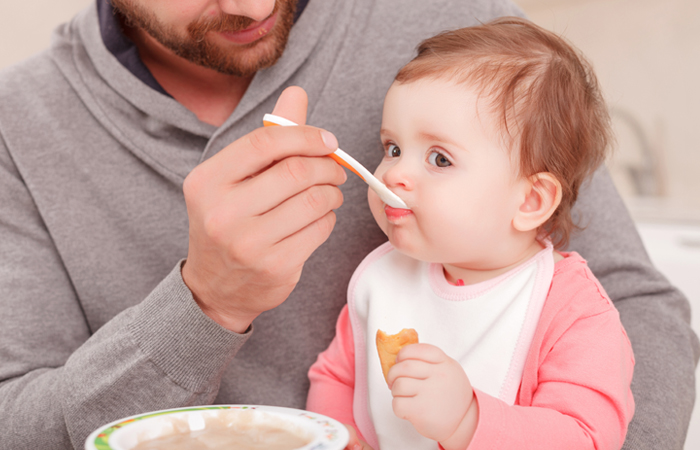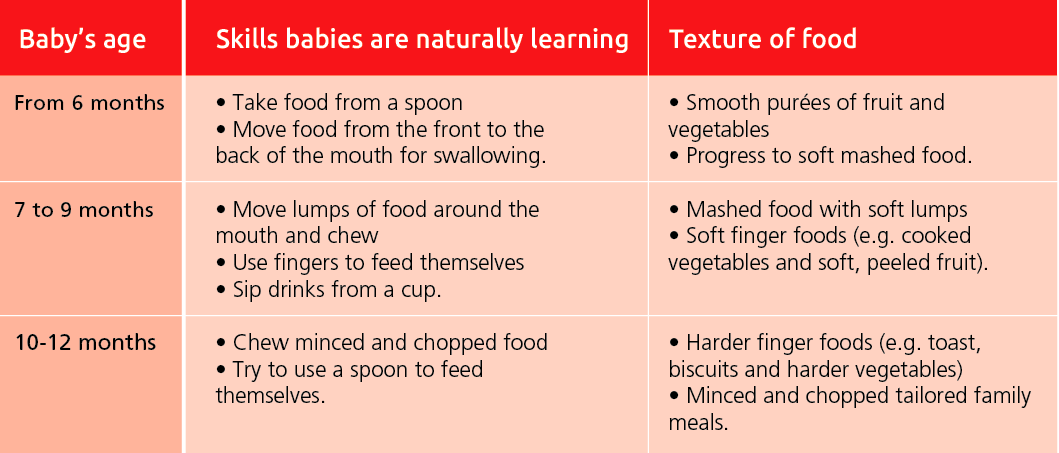1. The weaning process
In Weaning
Follow this topic
Bookmark
Record learning outcomes
At around six months of age, babies start the natural process of learning to eat solid food. While weaning is an exciting milestone to reach, it’s not without its challenges
As babies grow and develop, solid food becomes an important part of their diet. This process of introducing food is called weaning. The Department of Health recommends that babies start weaning at six months.

While all babies are different and some may be ready to wean earlier than six months of age, parents should not begin the process before 17 weeks because babies’ kidneys and digestive systems, along with their motor skills, are not sufficiently developed to cope with solid food and it could also increase the risk of infections and allergies. Equally, parents shouldn’t start weaning their baby later than 26 weeks, as it may lead to the baby struggling to accept lumpier foods later on.
Telltale signs that signal a baby is ready to wean include the baby being able to:
- Stay in a sitting position and hold their head steady
- Co-ordinate eyes, hands and mouth so that they can look at food, pick it up and put it in their mouth by themselves
- Swallow food – babies who are not ready will push their food back out with their tongue.
Babies will rarely show these signs in combination before six months of age.
Parents shouldn’t start weaning their baby later than 26 weeks
How to start
Weaning is an exciting new experience. It’s a gradual learning process and can provide a great opportunity for the family to sit down together and for the baby to learn from their parents.
The first aim is to simply get the baby used to the feeling of food and different tastes in his or her mouth, which may take practice. It is also important to offer babies a wide variety of tastes to help educate their palates and help them become good little eaters in the future. Starting the weaning process with vegetables teaches babies that not all foods are sweet and it can increase their liking and the amount of vegetables eaten for years to come.
If a baby spits out a new taste at first, parents should keep trying – the more times babies try a new taste, the more likely they will be to accept it (even if it does take a few attempts!).
 Baby-led weaning
Baby-led weaning
Baby-led weaning involves offering babies a range of different foods that they can pick up and eat themselves, rather than sticking to the traditional first foods of purées and mashed fruits and vegetables. Softer finger foods such as cooked sticks of carrot, broccoli and sweet potato, and chunks of avocado and banana are good options to start with. These should be cut up into pieces big enough to hold in their fist and stick out the top of it – about the size of an adult’s finger.
It is thought that the benefits of baby-led weaning include improving motor skills, introducing babies to a wider range of tastes and textures early on and making eating more enjoyable.
The process of spoon-fed weaning

 Did you know?
Did you know?
Eating food from a spoon or fingers requires a different mouth action to that used when drinking free-flowing milk, and may aid speech development.
